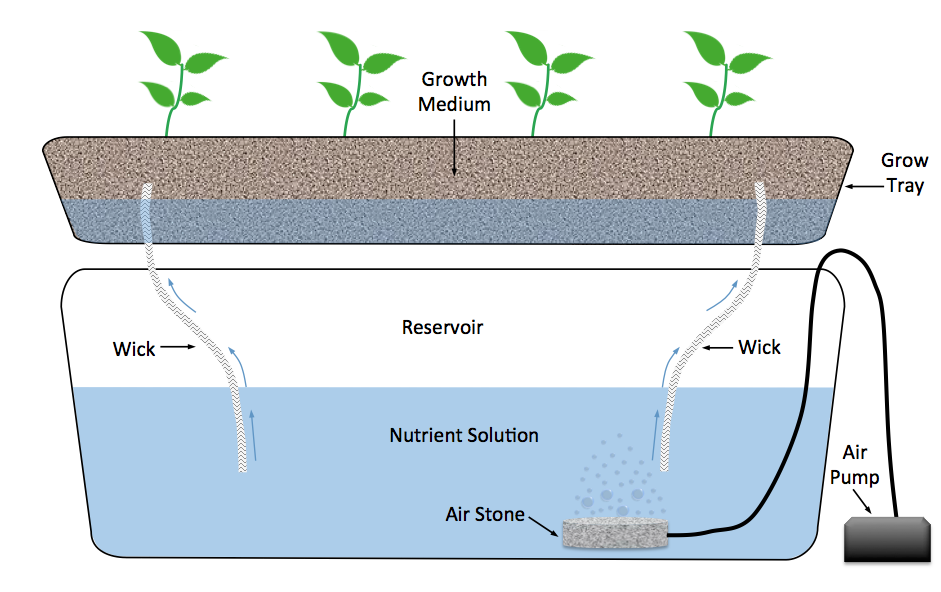Hydroponics
By Iranga NavaratnaAgriculture is the science that is related to cultivating plants and livestock. It has been one of the most important parts of the human livelihood since the beginning of civilizations. Cultivation is still the backbone of the economy in some countries where there is fertile land.
But do we really need fertile land or soil for cultivation? The answer is NO. Plants need light, water, temperature and nutrients to grow. Beside these factors, plants need a medium to grow in. Usually, that medium is soil. However, plants can also grow in water or inert mediums such as perlite, rockwool, peat moss and gravel.
Hydroponics is a fine example where fields or large lands with fertile soil is not needed to grow crops. This technique uses water to grow plants in. The plants are placed in a way that the roots are in contact with water. The water is usually mixed with nutrient solutions so that the plants can absorb the necessary minerals from it.
Variations of hydroponic systems
There are different types of hydroponic systems based on how the plant is exposed to the nutrient solution. The most common methods include deepwater culture, wicking, aeroponics, Ebb and flow, dripping system and nutrient film technique. A hybrid hydroponic system can also be made by combining different methods according to the requirement.
Deepwater culture
This is one of the cheapest and easiest methods of hydroponics. In this method, a tank is used to store the nutrient solution. The solution in the tank needs to maintain a constant oxygen level. This is accomplished using an air pump. The plants are put in net pots and the net pots are immersed in water.

Wicking
In these systems, the plants do not come in contact with the nutrient solution directly. The plants are placed on a grow tray which contains a growing medium such as perlite. Wicks are used for taking the nutrient solution from the tank to the growing medium using capillary action.

Drip system
In drip systems, the nutrient solution flows slowly across the growing medium. Growing mediums such as rockwool or peat moss can be used in these systems. The medium should be able to hold the nutrient solution for a while so that the plants can absorb them. The excess water can be collected and reused in these systems.

Aeroponics
This method exposes the roots of the plants to a mist of nutrient solution. The plants are kept inside a chamber where there are nozzles to spray water. Pond foggers can also be used for creating the mist.

Nutrient film technique
This method uses a continuous flow of nutrient solution through the system which is reused. The plants are kept on a tilted plane so that the water flows back to the tank.

Advantages of hydroponics
-
Since no fertile land is needed, cultivation can be done anywhere.
-
Crops can be grown indoor with no effect by the climate.
-
Utilization of land and space can be maximized by using vertical racks.
-
Can be used in small spaces such as apartments.
-
Uses only 10% of water compared to crops that are grown in fields. This is possible since the water is recirculated through the system.
-
Crops grown using hydroponics have a better growth rate.
-
Since no soil is used, there will be no weeds growing among the crop.
-
The effect of diseases and pests is minimal since these are used in controlled environments.
-
Maintaining a hydroponic system is much easier than maintaining land with crops. After the plants are placed all that needs to be done is to maintain the nutrient levels, temperature and light.
Disadvantages of hydroponics
-
High initial investment.
-
Technical knowledge is required on equipment and agricultural knowledge is required to set the best environment for the plants.
-
Risk of power outage and system failures.
Conclusion
Hydroponics is a concept which is been there for a while but, in the recent past, it has become popular The main reason for this is that hydroponic systems can be set up anywhere with limited space and no fertile soil. These can be used in small spaces such as apartments as well as in large scale greenhouses for mass production.
With the advances in technology, hydroponics can be used for cultivation with minimum labour. The factors such as temperature, humidity, nutrient levels, light, etc. should be monitored continuously in hydroponic systems. If that is automated, labour is needed only to set up the equipment and harvest once the plants are grown.
Hydroponic systems can give a better yield with lesser usage of water and land than traditional agricultural methods. Usage of less land and water is vital since both of them are scarce resources. Therefore, hydroponics can become the future of agriculture.
References
• https://www.fullbloomgreenhouse.com/hydroponic-systems-101/
• https://www.explainthatstuff.com/hydroponics.html
• https://www.greenandvibrant.com/advantages-disadvantages-of-hydroponics

